หญิงสาวรายนี้ เธอมีชื่อว่า Melissa Miller ผู้ที่โด่งดัง จากสารคดี Naked And Afraid
ซึ่งตอนนี้เธอได้ กลายเป็นขวัญใจ จากแฟนคลับทั่วทุกมุมโลกไปแล้ว เธอทั้งสวย และหุ่นดี และเก่งต่อการเอาตัวรอดได้ทุกที่ ทั่วโลก เราไปดู รายละเอียดเกี่ยวกับเธอเลย
Meet Melissa Miller from Discovery Channel’s Naked and Afraid
Melissa Miller is in a word, a badass. She’s more comfortable being uncomfortable than any other outdoors person I’ve ever met. She’s appeared on two seasons of Discovery Channel’s primitive survival challenge show, Naked and Afraid. First, she survived for three weeks in the Amazon Jungle with literally nothing but some fishing line, her knife, and a fire starter. Then on Naked and Afraid XL Melissa had to survive for forty days in the Selati Basin of South Africa.
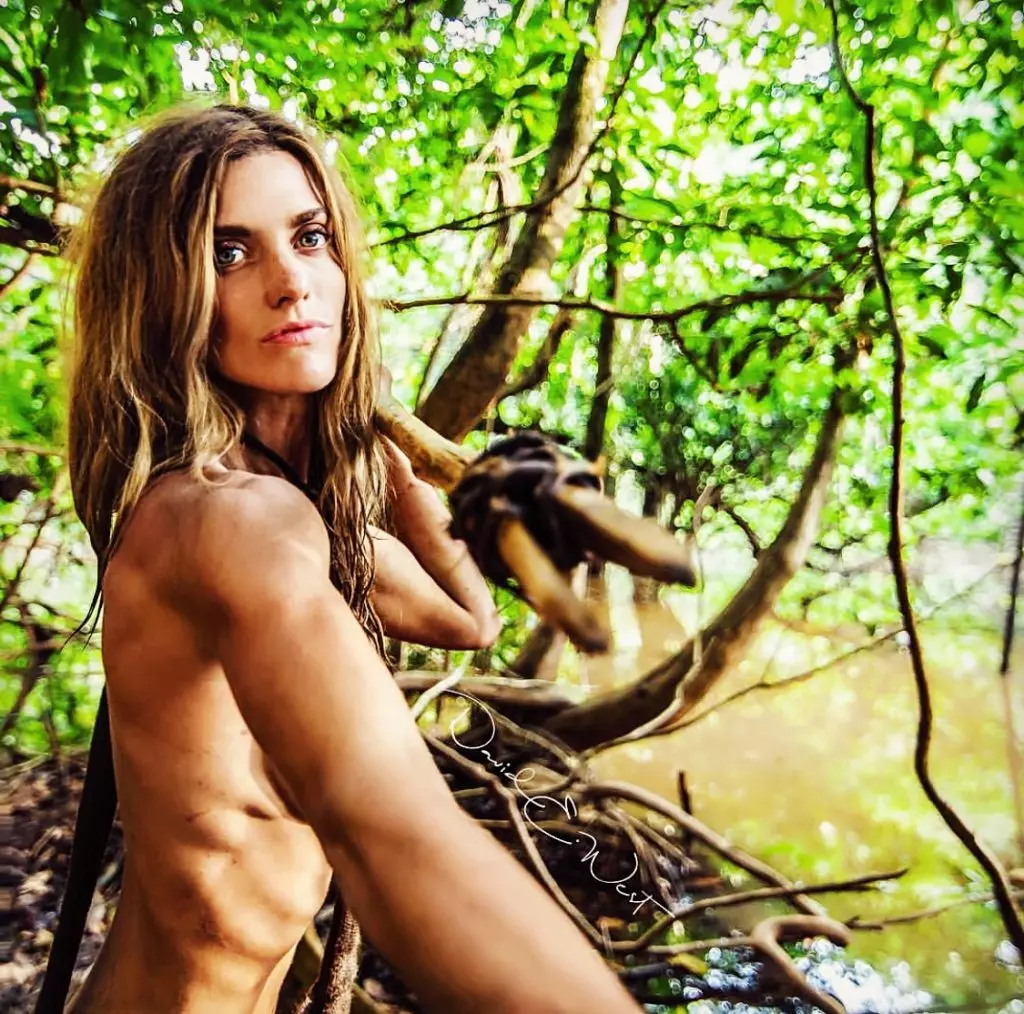
Melissa Miller began practicing primitive skills in college. In addition to being a star on Naked and Afraid, she is an environmental educator in Michigan’s largest park system and an advisor to several outdoor gear companies. Melissa is skilled in primitive trapping, shelter making, fire making, and foraging. She’s also a traditional bowhunter. HuntTested was fortunate to have the chance to sit down and chat with Melissa.
HuntTested: First off, how did you tough it out all that time? After a week in elk camp, I’m ready for a real bed and a shower.
Melissa Miller: It’s all about attitude and staying positive, clearing your mentality and focusing on all the good things that happen. Going out I knew it was going to be miserable from the start, and you really don’t have any moment of true comfort being so exposed. In that type of situation, you just need to remain totally positive. If you are soaking wet you need to be grateful for the spot on your body that is still dry. It applies to many things in life if you maintain a good outlook and keep pushing forward eventually you will make it to the end.
HT: How long did it take to get past the fact that you’re naked with strangers?
MM: I was over the whole naked aspect within the first day, which honestly was really surprising for me. Before I had to undress for the show, I nearly cried because I am a modest person. People think that just because you’re on that show you’re some sort of nudist or exhibitionist which is 100% False.
Nudity is what makes it such a hard challenge and what makes it completely primitive. Clothing is your number one shelter from bugs, sunburn, and cold, many people don’t realize that. The naked aspect of the show is not to exploit people but rather to make it that much more difficult.
HT: What special training or preparation did you do to be able to survive with no food, water, gear or clothes in the wilderness for over a month?
MM: I immersed myself in the outdoors 24:7, I was out in the woods with only a knife learning how to prepare and survive in a minimalist way. My approach has always been less is more. I was doing everything to get ready mentally and physically. Some days I would build shelters on no food or water to get a feel for what that would be like.
HT: What are some of the biggest misconceptions people have about the show?
MM: There are two major ones. One is that the show uses nudity for exploitative purposes when that is not the case at all. The challenge is it is supposed to be completely primitive and not having clothing makes protection from the sun, bug bites, and the cold very hard to achieve. Not having shoes is the hardest part, go camp naked for a day and see how it feels.
Not everyone on the show is a nudist, I definitely am not. One of the most nerve-racking parts of the show for me was the nudity part. I did not want people to judge me for taking my clothes off on camera but I wanted them to understand the purpose behind it and how it created such a difficult challenge.
Second that it’s fake. It really sucks going through a challenge like that and working so hard to and then see that people think that the show is fake. We all have bug bite and thorn scars, fractured bones, and some get untreatable diseases. There is nothing fake about it.
HT: What was the hardest part of being in an extended wilderness survival situation?
MM: So many things to name that it’s really hard. Not once out there do you feel totally comfortable and that is why there are so many hard factors. Even if your belly is full, you’re still on the hard cold ground exposed to bugs. I have gained a new thankfulness for my bed and blankets because of that show.
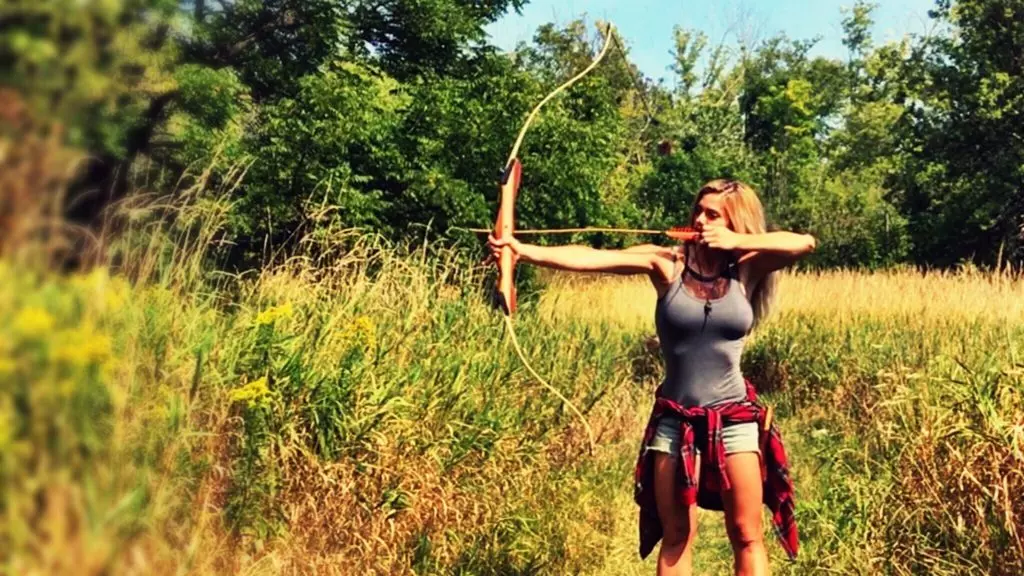
HT: Did surviving off the land change your view of the typical American diet?
MM: It totally changed my entire view on human diet. I started to realize that we eat so much garbage. By primitively surviving, I was able to see the way our ancestors ate. People living off the land, they don’t eat things in excess like we do.
Even the faintest taste of sugar was something pleasurable out there because you did not eat a lot of sugar naturally. It makes me think of all the sugar we pack in our diets every day. The same goes for tons of other things like processed grains, GMOs, hormones given to animals, the list goes on and on. It’s actually very alarming to think about.
HT: When you’re not required to be naked, what are a couple of your favorite lines of women’s outdoor apparel?
MM: Funny that you mention that, I have a very hard time finding good gear and styles that I like. I am not a pink-wearing type person; I like earth tones, flannel shirts, and work boots. Sadly, I typically find myself shopping and the men’s department a lot of the time to find the quality and look I want in things, especially boots.
I really like Columbia clothing, they are one of the first major outdoor brands I noticed to make quality outdoor clothing, but for a woman’s fit. I don’t try to brand myself but I always go with styles I like. If I like the way something looks I’ll get it, it doesn’t have to be a fancy brand name by any means.
Some brands charge way too much just because they have a name and logo on them. I don’t discriminate against Walmart or used items on eBay (yep). I love sifting through Goodwill because that is where you’ll find some pieces that were made when more quality was put into the construction of clothing. Adhering to a certain brand too much creates limits to what makes you and your style unique.
If I am going to represent a brand, it needs to be something I believe in. I’m an advisor for WeatherWool and they create outdoor garments completely from organic virgin wool on homegrown sources. Their garments cost a pretty penny but they’re worth it due to the time, labor, and hand craftsmanship that goes into their garments. Plus they’ll last a lifetime of use.
Oh and Danner boots, I purchased some Raptors (men’s boot only now) and have worn them so many times and put them through hell, but they still can be polished to look brand new.
HT: What survival skills do you think every hunter or outdoors person needs to know?
MM: Patience. It is something I still struggle with greatly. I can get pretty hyperactive and want things to happen right away but survival just takes so much patience and I needed to learn that.
HT: I know you’re a fan of custom knives and do a lot of work in the industry. What are a few of your favorite blades and what do you like about them?
MM: BOB Fieldcraft from Tops Knives – it is specifically designed for Bushcraft and survival uses. It was gifted to me by my boyfriend a few years ago. I took this knife with me on my 40-day challenge in South Africa and it served me very well. My favorite features on it include the spindles that you can use to create a friction fire with a bow drill. I also just like the all-around shape and feel of the knife, it gets everything I need to be done with ease.
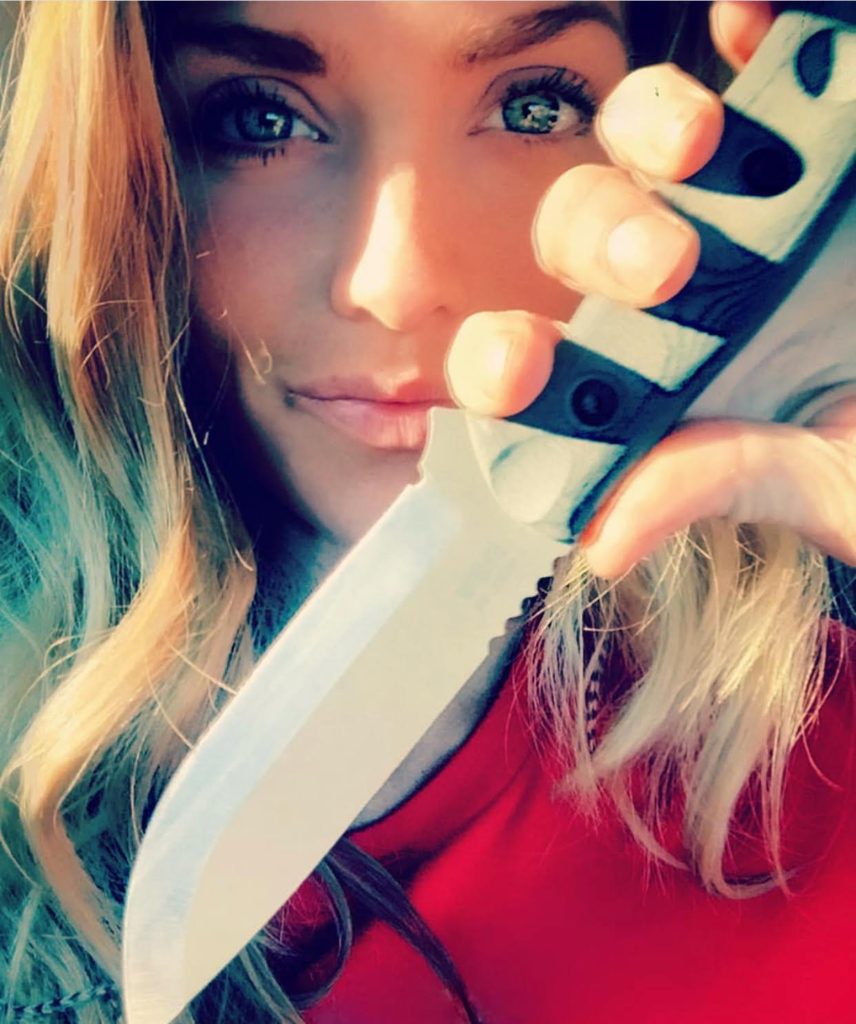
I also like the Drop Point Renegade by Fiddleback Forge – I carry this knife with me everywhere, it is great for doing fine detail work with wood carvings. It utilizes a convex grind and one of my favorite blade materials, 01 tool steel. It has yet to need sharpening and it is the perfect size for basic needs. A big misconception about bushcraft blades is that they need to be big, but this one is around 3.5 inches blade length and that is perfect.
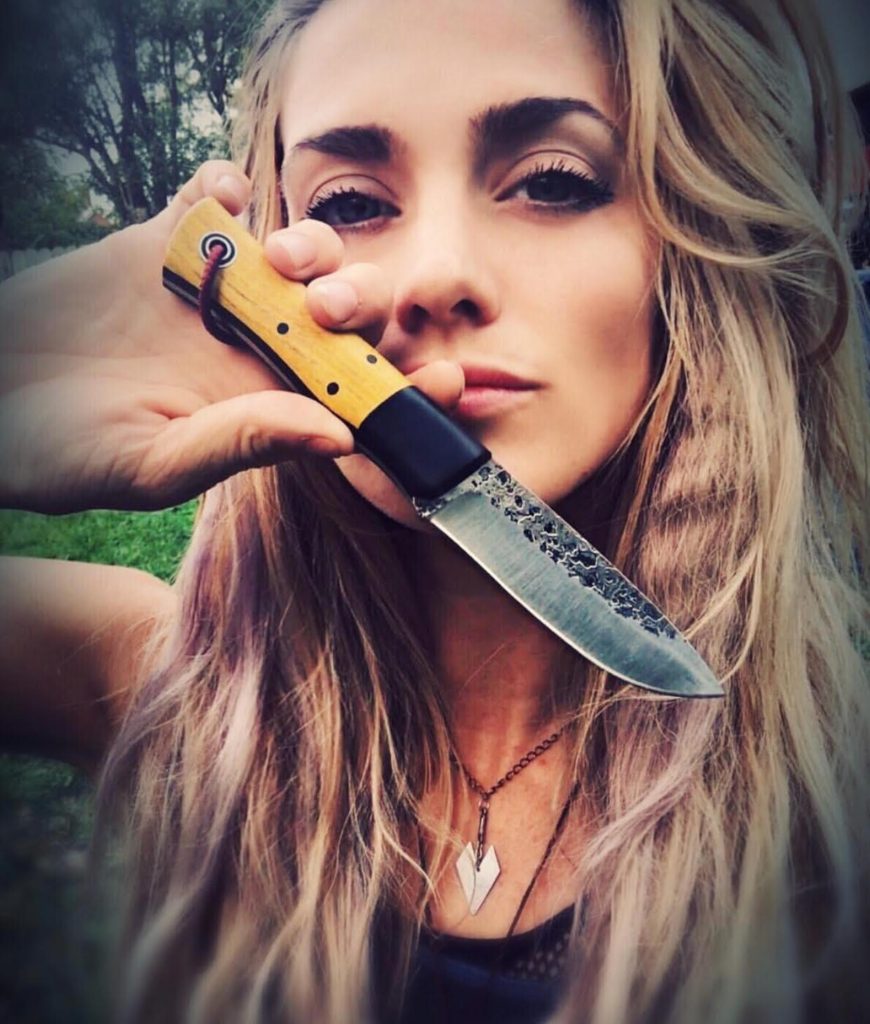
AEOF Afghan Gurkha Kukri from Nepal – these are an absolute steal, you can find them for around $70 on Amazon and boy do they pack a punch. If you want a great shelter building knife with a lot of swing and momentum behind it, this is the way to go. At nearly 2lbs, it gets the job done. Here is a video about the Gurkha Kukri.

HT: Outside of knives, what are some of your favorite items of outdoor gear?
MM: I try to be as minimal as possible and I really think that that is an important part of primitive survival, being able to survive with little to no gear. That is why I wanted to do the show Naked and Afraid so badly, it was just like this ultimate test.
As for essentials I always like to carry a fire starter with me. I recently got this fire rod called from a small company, Fatwood Firesteels, and I’m in love with it. The entire handle is made out of fatwood from a Pinetree. It also has another piece of fatwood on it. To those that do not know about fatwood, it is extremely flammable and the shavings can be used as a waterproof tinder or fire starter.
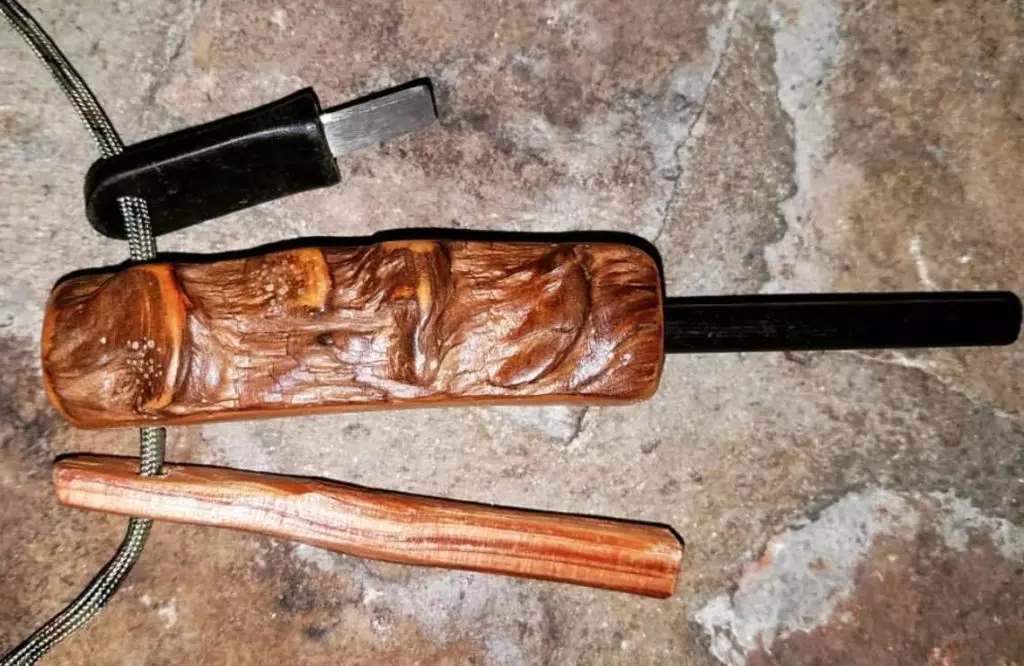
I also am really big on my backpack. The Kelty daypack I have right how has amazing storage, organization and a quick access zipper on the side to get to the main compartment. It’s just a great backpack all around. Plus when my dog gets tired she fits right in it and I can take her everywhere I hike.
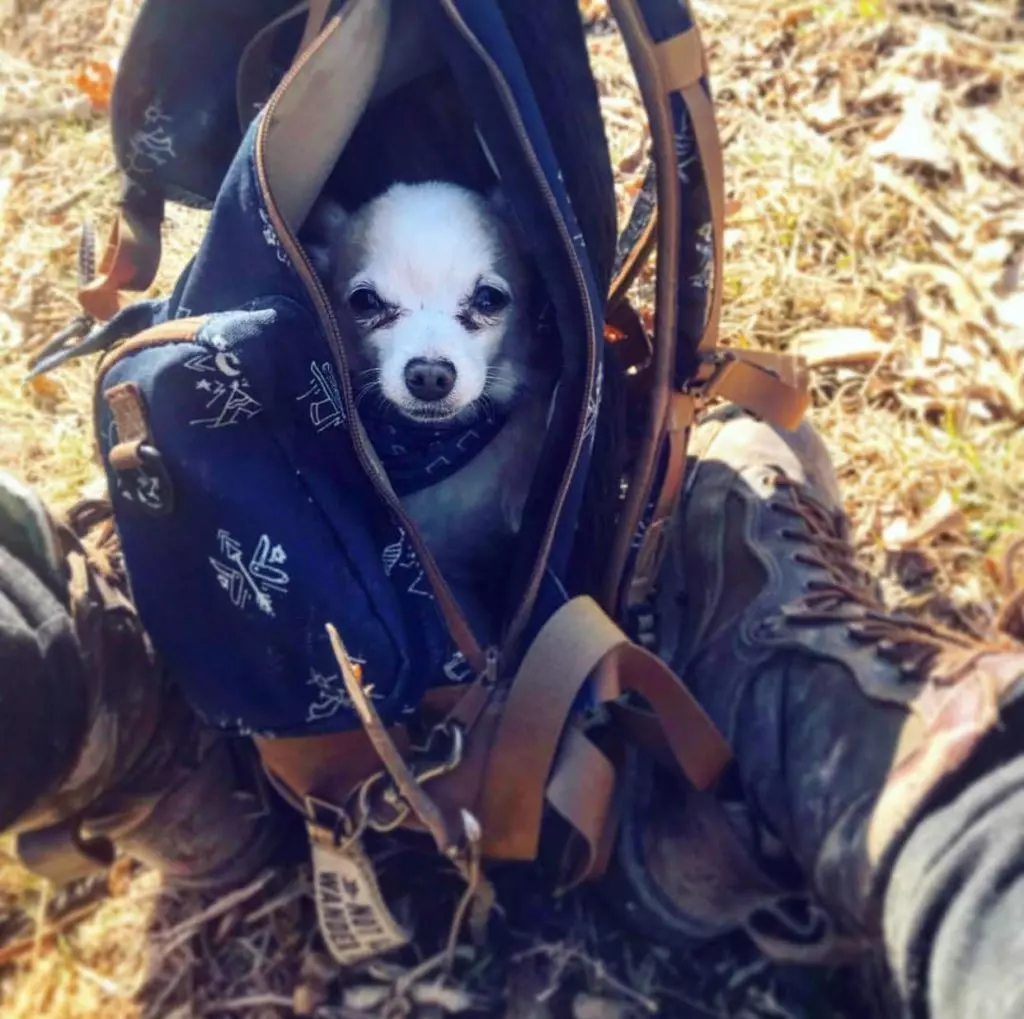
HT: You’re getting into traditional bowhunting, have you bowhunted since you’ve been back in the States?
MM: This is pretty crazy but I actually learned archery very quickly the summer before I went out to South Africa. Shooting 200 to 300 arrows a day helped me pick it up very quickly. I made an archery range in my backyard. I had only done some bowfishing before then so fish were always my main game.
This year I plan to get my hunting license and go out and see what I can hunt, but I have never hunted before my time in Africa. It is a game of patience, something I need to learn much better! I was also afraid to go out and try hunting for the first time because I wanted to make sure I could make a clean shot. The last thing I wanted to do was injure an animal and not be able to recover it. This upcoming hunting season I feel much more confident and can’t wait to test out all that I have learned in Africa and on the archery range, out in the field.
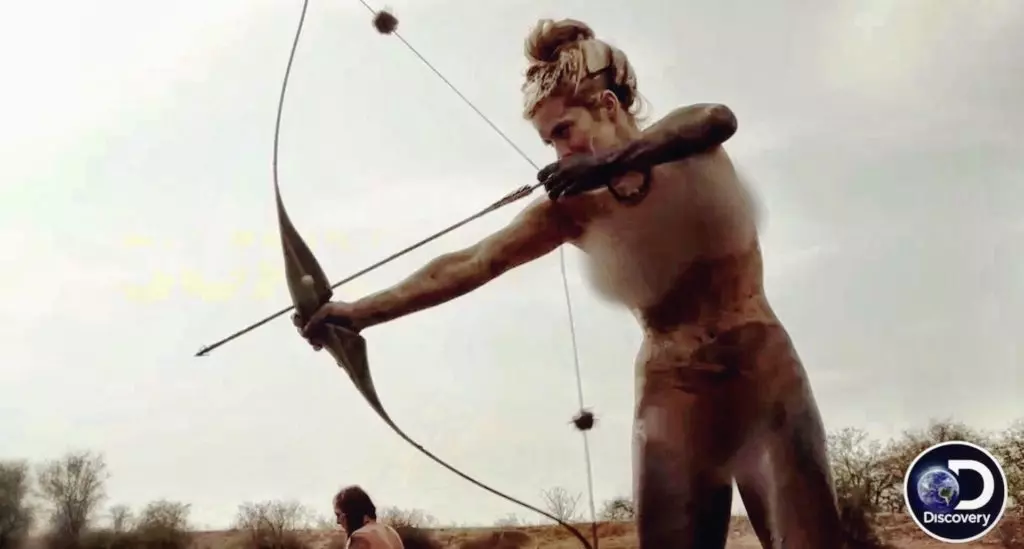
HT: How has your experience on the show made you a better hunter and outdoorswoman?
MM: So on the show, I was able to learn how to hunt from some of the greatest primitive hunters out there. It completely opened my eyes to the world of hunting and just how hard it truly is. Hunting in Africa was no joke, all of the animals out there are on the highest alert because there are so many large predators.
We were also surviving on a game reservation so those animals were very used to being hunted and knew how to elude us. I knew it was going to be difficult to hunt out there, but how difficult it was truly surprised me. I grazed the hairs off the back of an African bushbuck (antelope species) with my arrow but just missed it.
The animals there dip down the second they hear that string snap, and that was something I had to learn the hard way, but now I know how much lower I have to aim in order to get a clean shot off. Learning how to hunt in Africa was the best. It was extremely difficult and I will have a much richer experience hunting here in the States as a result of my experience.
HT: What question do you wish people would stop asking you?
MM: I do not mind answering questions about the show, in fact, I welcome them because they are always from people who are genuinely interested and I would never snap a question just because it had been asked so many times. I enjoy talking about the experience because it is something that has changed my life for the better.
Comments bug me more than anything, people who watch the show and make judgments about the actions on it. I try to remind people that they see only about that .07% of our experience on the TV show. There’s so much that goes on that people don’t see so a lot of times you will see viewers make negative comments (on the Facebook page especially) when they don’t see the whole picture. Or when people give someone a hard time about tapping out.
Being out there is so much harder than it actually looks. I completely understand what brings people to tap out. A part of you goes insane out there. The bugs especially play mind games with you when you feel like you are being eaten alive at night time.
HT: What’s next for you?
MM: I have a lot of things I plan to do. Expanding my work with outdoor and knife companies as well as social media influencing. Teaching people through my social media channels about survival, nature, and outdoor gear. My ultimate goal is to open up a store. There are possible aspirations to do more TV, but I’m still trying to decide if I want to go that route. I didn’t do the show to be on TV, I did it because I loved it.
If I could host an outdoor show that would be really cool, I think there is a huge lack of women in the outdoor world right now. For now, I am just continuing to grow my brand and determine the best route for me to take into the future. I don’t like to plan everything out too much; everyone says you need a five-year plan but I don’t necessarily agree with that 100%.
I live my life with passion and follow the things I love. Because I graduated with an elementary education degree, I was afraid to take a different route. Now, I am so happy that I did. I’m doing things that I love, things that are exciting and new to me. If we plan out our lives and end goals to specific guidelines, we let new and enriching opportunities pass us by.
HT: Thanks Melissa, it was great to have you as a guest on HuntTested.
Connect with Melissa:

















0 ความคิดเห็น:
แสดงความคิดเห็น